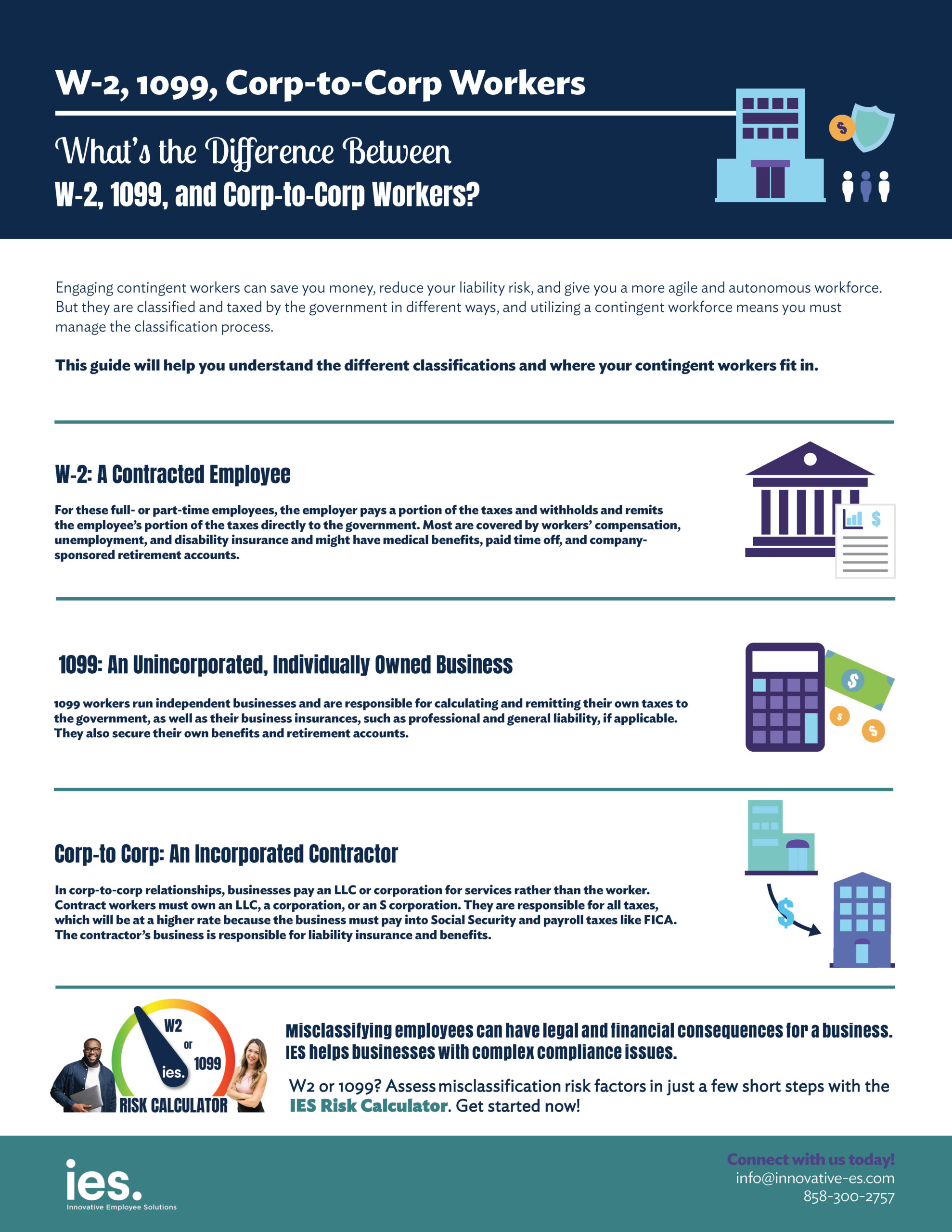1099 Employee Misclassifications — Are You at Risk?
Posted on September 18th, 2019 Read time: 3 minutes

If businesses want to avoid incurring and paying unnecessary fines, correctly classifying workers of all types is critical. Classifying 1099 workers, or independent contractors, can be especially tricky for many companies. Reports of misclassification reach as much as one-third of workers in some industries. A report published by the Economic Policy Institute revealed that at the state level, 10% to 20% of employers are misclassifying at least one worker.
And with work by freelancers expected to grow by 179% over the next 10 years, worker misclassification audits and fines will rise for those who don’t classify workers properly.
How Do Workers Get Misclassified?
Worker misclassification occurs for a variety of reasons. Many companies simply are not clear about what differentiates an employee from an independent contractor. Another reason is cost. Companies do not have to pay for benefits such as healthcare or paid time off for independent contractors. Workers requesting to be brought on as independent contractors and a cap on employee headcount can also play into the misclassification mix.
But even when it’s unintentional, worker misclassification can cause multiple penalties at the state and federal levels. Failure to provide W-2 forms for an employee can lead to back taxes of up to 41.5% of an employee’s wages for up to three years. If the misclassification is determined to be intentional, corporations can face fines as high as $500,000 or even jail time.
That’s not to mention the fallout from class-action lawsuits. Uber is under attack by more than 60,000 drivers who say they were misclassified as independent contractors. Uber already agreed to pay $20 million in settlements, and the company could be ordered to pay a filing fee of $1,500 for each driver.
Are You at Risk of 1099 Misclassification?
Your organization might not be as large as Uber, but state and federal penalties alone can be hefty for businesses of any size. To determine whether your company is at risk for 1099 misclassification, there are three main things you can do:
1. Clarify how your company uses independent contractors.
The government defines workers as either W-2 employees or 1099 independent contractors. Identify independent contractors across your company, and educate yourself on how they are engaged. There are probably more than you realize.
Statutory employees and statutory non-employees are two other categories, but the two most common worker classifications are W-2 employees and 1099 workers. If you’re not sure about these differences, you can read more here. Talk to your HR department, hiring managers, and the contractors themselves to clearly define every job and how each worker is engaged at your company.
2. Understand the state laws where you have independent contractors.
Just because you feel confident you’ve properly classified a 1099 worker in Arizona doesn’t mean the same type of worker will qualify in California. The California Supreme Court recently adopted tougher standards for establishing independent contractor classification and determined that this decision applies retroactively. Therefore, companies that rely heavily on freelancers in California have more to take into consideration than those based elsewhere. Make sure you know the state laws specific to your 1099 workers.
3. Evaluate the status of the contractor and the engagement.
There are many considerations to take into account with each independent contractor, and each should be reviewed individually. One major factor for classifying workers is understanding who determines how, when, and where the work is completed. Does the worker have control of his or her work, or does the company establish it?
Consider whether your company has any W-2 employees doing the same work a 1099 worker is being engaged to do. And will you offer any paid vacation, time off, or training for the 1099 worker? Other factors to consider: Does the worker have a proper business set up with other clients? Does the worker have business insurance or a website to market his or her services?
Are any of these points stirring up concern about your compliance? Innovative Employee Solutions (IES) helps businesses sort through this complex compliance issue. IES has helped clients that have faced multiple misclassification settlements in the past, worked with clients to create robust vetting and onboarding processes, and helped tighten up independent contractor agreements.
IES developed a free interactive assessment tool called the RISK CALCULATOR to help you determine your risk level when engaging workers. Learn your risk level within minutes.
Take the assessment now: innovativeemployeesolutions.com/riskcalculator
Let’s break down the difference of worker classifications in a quick reference cheat sheet!
Still not sure? IES is here to help. If you could use some outside expertise in handling your contingent employees, contact us today. Let’s start the discussion! Email us at info@innovative-es.com or call 858-300-2757.
Written By: Sara Jensen, Vice President of Business Development at IES
Sara Jensen is the vice president of business development at Innovative Employee Solutions (IES), a leading global Employer of Record in more than 150 countries that specializes in contingent workforce solutions such as outsourced payrolling, independent contractor compliance, and contractor management services. Founded in 1974, IES has grown into one of San Diego’s largest women-owned businesses and has been named one of the city’s “Best Places to Work” for 10 years in a row.
Related Articles
Posted on September 18th, 2019 Read time: 3 minutes

If businesses want to avoid incurring and paying unnecessary fines, correctly classifying workers of all types is critical. Classifying 1099 workers, or independent contractors, can be especially tricky for many companies. Reports of misclassification reach as much as one-third of workers in some industries. A report published by the Economic Policy Institute revealed that at the state level, 10% to 20% of employers are misclassifying at least one worker.
And with work by freelancers expected to grow by 179% over the next 10 years, worker misclassification audits and fines will rise for those who don’t classify workers properly.
How Do Workers Get Misclassified?
Worker misclassification occurs for a variety of reasons. Many companies simply are not clear about what differentiates an employee from an independent contractor. Another reason is cost. Companies do not have to pay for benefits such as healthcare or paid time off for independent contractors. Workers requesting to be brought on as independent contractors and a cap on employee headcount can also play into the misclassification mix.
But even when it’s unintentional, worker misclassification can cause multiple penalties at the state and federal levels. Failure to provide W-2 forms for an employee can lead to back taxes of up to 41.5% of an employee’s wages for up to three years. If the misclassification is determined to be intentional, corporations can face fines as high as $500,000 or even jail time.
That’s not to mention the fallout from class-action lawsuits. Uber is under attack by more than 60,000 drivers who say they were misclassified as independent contractors. Uber already agreed to pay $20 million in settlements, and the company could be ordered to pay a filing fee of $1,500 for each driver.
Are You at Risk of 1099 Misclassification?
Your organization might not be as large as Uber, but state and federal penalties alone can be hefty for businesses of any size. To determine whether your company is at risk for 1099 misclassification, there are three main things you can do:
1. Clarify how your company uses independent contractors.
The government defines workers as either W-2 employees or 1099 independent contractors. Identify independent contractors across your company, and educate yourself on how they are engaged. There are probably more than you realize.
Statutory employees and statutory non-employees are two other categories, but the two most common worker classifications are W-2 employees and 1099 workers. If you’re not sure about these differences, you can read more here. Talk to your HR department, hiring managers, and the contractors themselves to clearly define every job and how each worker is engaged at your company.
2. Understand the state laws where you have independent contractors.
Just because you feel confident you’ve properly classified a 1099 worker in Arizona doesn’t mean the same type of worker will qualify in California. The California Supreme Court recently adopted tougher standards for establishing independent contractor classification and determined that this decision applies retroactively. Therefore, companies that rely heavily on freelancers in California have more to take into consideration than those based elsewhere. Make sure you know the state laws specific to your 1099 workers.
3. Evaluate the status of the contractor and the engagement.
There are many considerations to take into account with each independent contractor, and each should be reviewed individually. One major factor for classifying workers is understanding who determines how, when, and where the work is completed. Does the worker have control of his or her work, or does the company establish it?
Consider whether your company has any W-2 employees doing the same work a 1099 worker is being engaged to do. And will you offer any paid vacation, time off, or training for the 1099 worker? Other factors to consider: Does the worker have a proper business set up with other clients? Does the worker have business insurance or a website to market his or her services?
Are any of these points stirring up concern about your compliance? Innovative Employee Solutions (IES) helps businesses sort through this complex compliance issue. IES has helped clients that have faced multiple misclassification settlements in the past, worked with clients to create robust vetting and onboarding processes, and helped tighten up independent contractor agreements.
IES developed a free interactive assessment tool called the RISK CALCULATOR to help you determine your risk level when engaging workers. Learn your risk level within minutes.
Take the assessment now: innovativeemployeesolutions.com/riskcalculator
Let’s break down the difference of worker classifications in a quick reference cheat sheet!
Still not sure? IES is here to help. If you could use some outside expertise in handling your contingent employees, contact us today. Let’s start the discussion! Email us at info@innovative-es.com or call 858-300-2757.
Written By: Sara Jensen, Vice President of Business Development at IES
Sara Jensen is the vice president of business development at Innovative Employee Solutions (IES), a leading global Employer of Record in more than 150 countries that specializes in contingent workforce solutions such as outsourced payrolling, independent contractor compliance, and contractor management services. Founded in 1974, IES has grown into one of San Diego’s largest women-owned businesses and has been named one of the city’s “Best Places to Work” for 10 years in a row.







